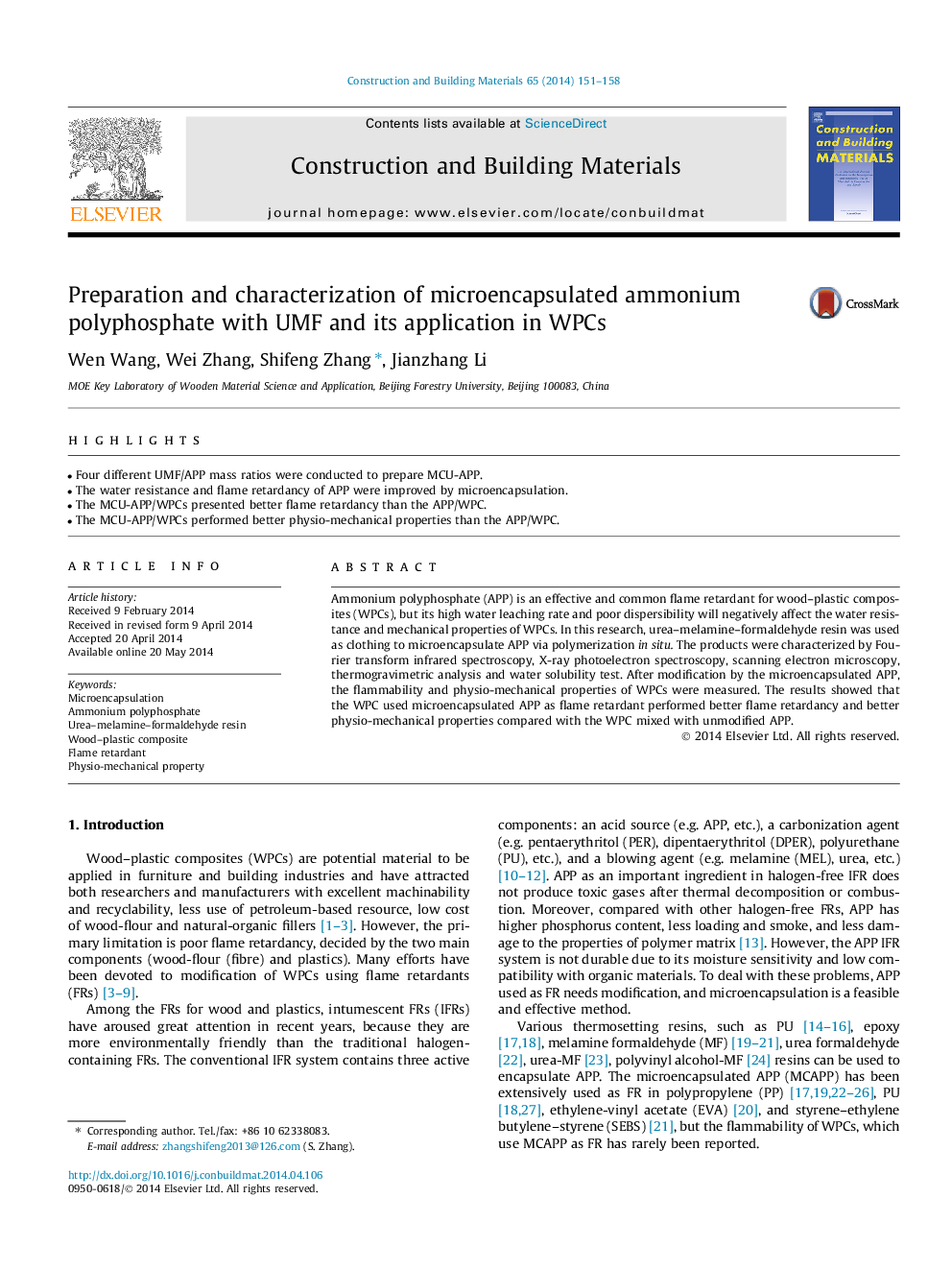| Article ID | Journal | Published Year | Pages | File Type |
|---|---|---|---|---|
| 257487 | Construction and Building Materials | 2014 | 8 Pages |
•Four different UMF/APP mass ratios were conducted to prepare MCU-APP.•The water resistance and flame retardancy of APP were improved by microencapsulation.•The MCU-APP/WPCs presented better flame retardancy than the APP/WPC.•The MCU-APP/WPCs performed better physio-mechanical properties than the APP/WPC.
Ammonium polyphosphate (APP) is an effective and common flame retardant for wood–plastic composites (WPCs), but its high water leaching rate and poor dispersibility will negatively affect the water resistance and mechanical properties of WPCs. In this research, urea–melamine–formaldehyde resin was used as clothing to microencapsulate APP via polymerization in situ. The products were characterized by Fourier transform infrared spectroscopy, X-ray photoelectron spectroscopy, scanning electron microscopy, thermogravimetric analysis and water solubility test. After modification by the microencapsulated APP, the flammability and physio-mechanical properties of WPCs were measured. The results showed that the WPC used microencapsulated APP as flame retardant performed better flame retardancy and better physio-mechanical properties compared with the WPC mixed with unmodified APP.
